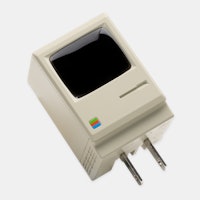Click to view our Accessibility Statement or contact us with accessibility-related questions
Free Standard Shipping in the US on orders over $99
Free Standard Shipping in the US on orders over $99
Drop Refurbished
Like-new products you can trustDrop Rewards
Get $5 for every 500 points you earn! Learn more
Drop Keyboard Club
Become a member and expand your keycap collectionCollaborate With Us
For Brands & Designers© 2024 Drop



The most egregious one being that monitors are "locked" to either NVidia or AMD. In fact, NVidia GPUs are actually locked out of the industry standard in FreeSync essentially because they want to upcharge people ~$200 on the monitors.
Yes, they can get away with it because they have a quasi-monopoly and many consumers are poorly informed. This monitor + a flagship Vega would still be less than a comparable GSync monitor - an incredible value for anyone.
Now you may be absolutely fine with a $200+ markup for an identical product, but that doesn't mean that everyone else should be forced to be.
i have reread what I have written 10 times both the first question and my thanking those that helped me and do not read words you have seen.
and yes I already said gsync is a 200+ dollar mark up on monitor price as its proprietary to nvidia , freesync is open source and therefore free, for your info there are some nvidia folks that contribute to freesync. freesync is not amd's baby they chose to use something FREE, and you can bet your HOUSE on the fact that if amd had made there own sync it would not be free to consumers.
what are the "many" other levels of being wrong pray tell? lol you can argue amd till your blue in the face, when you yourself said it. "the have a quasi-monopoly" and that is what I was referring to most gamers buying a gaming monitor buy nvidia gpu's . do show numbers to prove it wrong. .... oh wait you can't cause I'm not wrong. SIT DOWN.
" any monitor that has a "sync" with a gpu uses either freesync or gsync and each are designed to work with either nvidia or amd gpu's. "
False. FreeSync can be used with any GPU as it is open and requires no additional hardware. In fact the laptop application of GSync is identical to FreeSync. NVidia has opted to disable FreeSync compatibility for the reasons outlined above.
" and in reality they are locked to 1 of the 2 gpu makers."
True for all practical purposes, but again, because of NVidia and uninformed customers not knowing any better.
" yes I already said gsync is a 200+ dollar mark up on monitor price as its proprietary to nvidia "
Mostly false. There is no extra cost other than the artificial price inflation from NVidia.
" freesync is open source and therefore free "
False. DisplayPort licenses are not free (obviously) and FreeSync requires a PSR adapter for the controller, which adds to the manufacturing and engineering cost.
" for your info there are some nvidia folks that contribute to freesync "
False and maybe you should lay off the NVidia Kool-Aid.
My point here is that you are lamenting the lack of options for monitors on one hand while throwing money at a company whose entire business model is built around ensuring there is a lack of options for monitors with the other. And not only that, you're arguing (incoherently) that anyone that isn't such a rube is in the wrong, which is just sort of hilarious.
I don't have a horse in the Team Red/Green race, but I can do math and a bit of research plus a dose of logic and come to the conclusion that this is a great deal for people that aren't religiously committed to one cult or another. You're interested in some numbers? Try ~$130k of preorders as of this comment - something like 10x more than the most popular GSync monitor on here.
The additional cost would come partially from the Gsync module on desktop monitors which uses an FPGA and memory to do the low framerate compensation whereas the Freesync monitors only require the scalar asic. I personally believe the price difference is also due to market demand. Looking at comparable Freesync vs Gsync monitors from the same vendor on Amazon's stats skews towards Gsync monitors.
Most laptop implementation of sync technology no longer requires a module because the gpu is driving the display directly which is not possible for a desktop monitor. Then the laptop manufacturer & gpu vendor tweak the implementation to work.
I would say the real difference of the ~$200 is convenience. Gsync monitors are tested & tweaked to provide a similar experience regardless of monitor vendor. You can probably get a very similar experience with a Freesync monitor but would require more research as the Freesync monitors have varying levels of feature support & quality of implementation. There have been minor issues on forums on both sync technologies but what I would call major limitations from specific Freesync monitors. Some issues have been fixed for certain brands of monitors like ghosting & LFC but buying a random Freesync monitor is still more of a gamble in quality than a gsync monitor.
Ultimately, this monitor on paper seems like a great deal for the price regardless of gpu vendor. Anything beyond that would require detailed reviews from multiple sources.
Not sold on the market demand being the sole driver on pricing. It's hard to envision a world in which consumers pay a 30-50% markup for the same product purely to buy into the ecosystem. In a world where NVidia isn't a monopoly, there's probably something like a $50-$100 premium for GSync, which is way less. Even Apple, which is kind of the ultimate in terms of leveraging network effects and closed ecosystems, can't get away with those kind of markups.
Good points on the benefits of a closed system - the experience for NVidia/GSync is going to be more uniform in general though I think AMD has closed the gap here, but NVidia is definitely (rightly in my opinion) benefiting from being a first mover and a good reputation on that front.